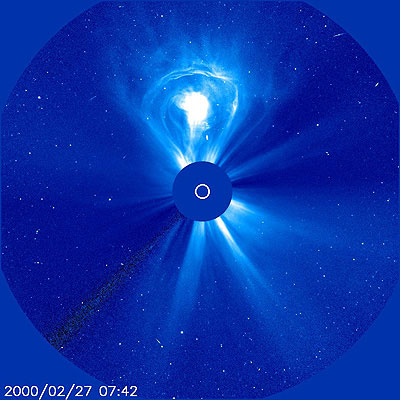| Jul 23, 2012 |
The Sun has a great idea
|
|
(Nanowerk News) A light bulb-shaped eruption leaps from the Sun and blasts into space in this archival image from the ESA/NASA Solar and Heliospheric Observatory, SOHO.
|
|
SOHO captured the scene on 27 February 2000, watching as a large filament rose from the Sun’s broiling atmosphere and evolved into the coronal mass ejection loop seen here.
|
 |
| The Sun’s great idea.
|
|
A coronal mass ejection – or CME – is a huge cloud of magnetised plasma ejected from the Sun’s atmosphere – the corona – and launched into interplanetary space. They comprise millions of tonnes of gas and race away from the Sun at hundreds of kilometres per second.
|
|
If a powerful CME is aimed in Earth’s direction then the resulting geomagnetic storm may trigger regional power outages and communications blackouts.
|
|
But CMEs also have an appealing side: interactions with Earth’s magnetic field ignite auroras over the northern or southern poles, producing spectacular natural light displays that dance across the night sky in shades of red and green.
|
|
This particular CME shows three distinctive features as it leaps from the Sun. A bright loop of plasma leads the way with a dark, low-density cavity behind it. The light bulb ‘filament’ – a bright orb of solar plasma – follows behind and dominates the centre of feature.
|

